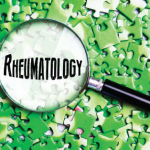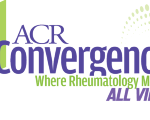‘Unfortunately, biases are pervasive & infiltrate everything. That’s part of what we need to accept when we’re tackling them.’ —Irene Blanco, MD
Calls to address racism in medical education are increasing, and medical students are organizing to combat hostile learning environments while many minority faculty are leaving academic medicine due to the ongoing effects of racism in the medical profession.
“It is vital that academic institutions become actively anti-racist,” Dr. Scott said, “and specifically focused on medical education as one of the many catalysts for change for minoritized communities.”
Implicit bias continues to have an impact on healthcare settings: A common microaggression Black and brown medical students and physicians face in the workplace is being mistaken for a nurse, an orderly or a janitor. When a doctor addresses the misconception, rather than being met with an apology they are often told they’re being overly sensitive.
Other microaggressions include calling a Black or brown person “articulate”—the implication being that this is unusual—or saying you “don’t see color” or you are “colorblind.” Black and brown people don’t live in a colorblind world, and when you boast you don’t see color, you show your eyes are closed to their experience.
“Racial microaggressions lead to psychological stress, physiological stress and behavioral stress,” said Dr. Blanco, adding that the accumulation of stress can lead to traumatic psychological and physiological symptoms, including anxiety, fatigue, ulcers, elevated blood pressure and loss of appetite.
These attitudes affect patients from underrepresented groups, as well as healthcare providers. Some healthcare professionals may blame patients for their illnesses. They may view minority patients as “lazy” and assume they are ill because they don’t take care of themselves, rather than understanding that significant barriers to their good health and well-being may exist.
In an article published in the Journal of Public Health, researchers looked at the way clinicians communicate with patients and addressed the implicit bias in faculty and attendings.1 In the cross-sectional study of 40 primary care physicians and 269 patients in urban community-based practices, implicit bias was monitored with two implicit bias association tests. The study found these communications with patients tended to be clinician dominated and less centered on patients. Patients gave clinicians lower ratings on trust and confidence.
“Ultimately, the conclusion from the study highlighted that clinician implicit bias and race compliance stereotyping are associated with markers for poor visit communication, and poor ratings of care, particularly among Black patients,” said Dr. Scott.
Even nonverbal communication can convey racial bias to patients. A 2016 study of end-of-life care published in the Journal of Pain and Symptom Management sought to understand why Black patients are more likely to die in the intensive care unit than white patients, despite all receiving life-sustaining treatment.2 Although patients did not score physicians differently based on verbal communication, physicians’ nonverbal communication scores were significantly lower from Black patients than from white patients.
“In this small regional sample, researchers were able to ultimately conclude that hospital-based physicians have similar verbal communication behaviors when discussing end-of-life care for similar Black and white patients,” Dr. Scott said, “but did exhibit significantly fewer positive, rapport-building, nonverbal cues with Black patients.”



